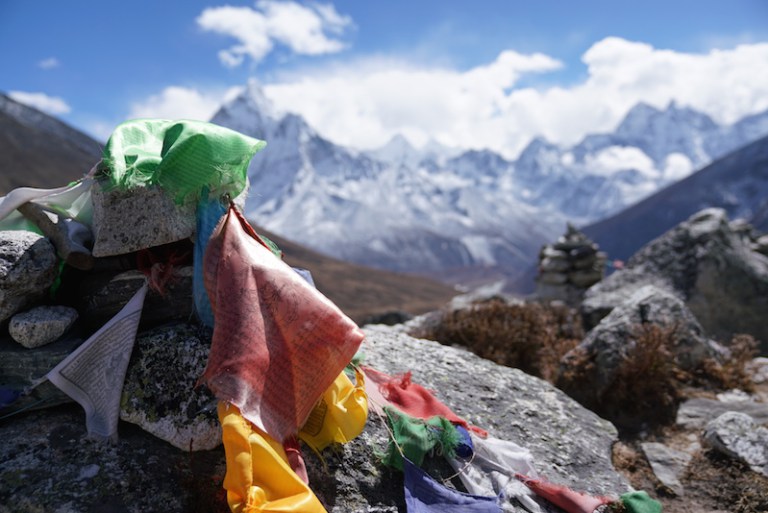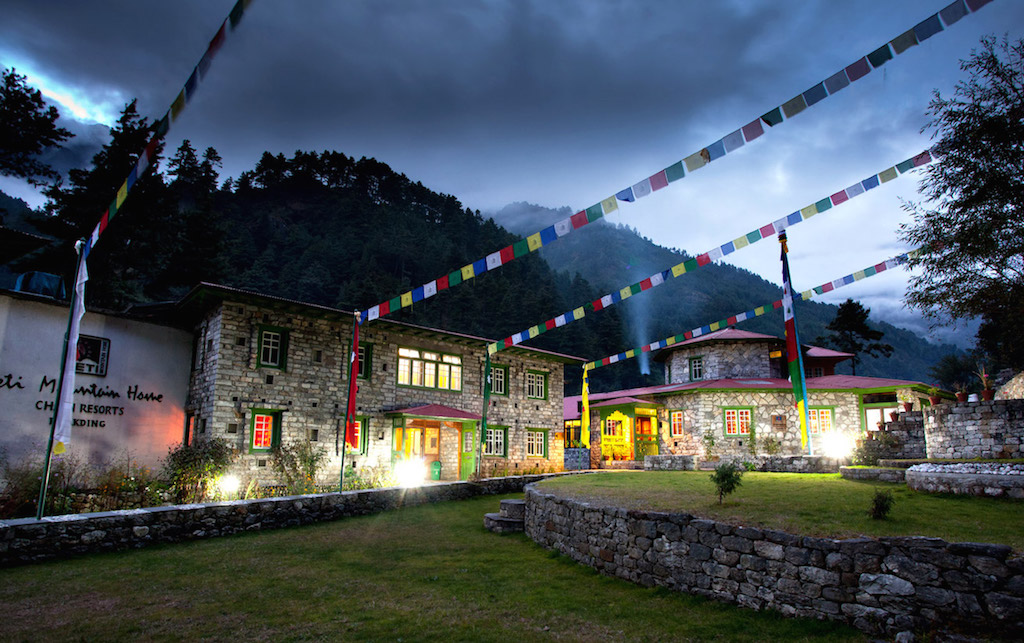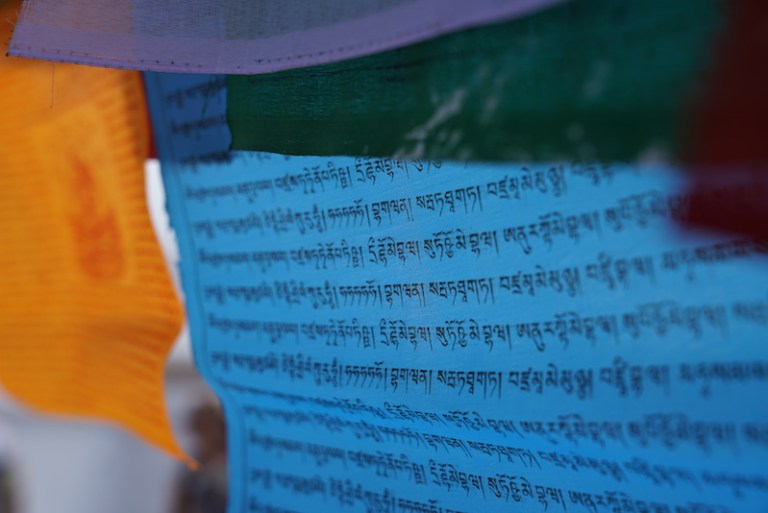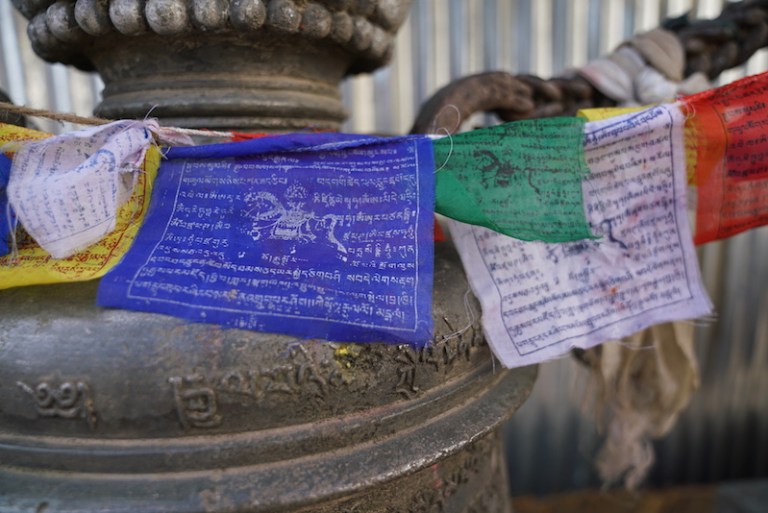Tibetan Prayer Flags are a common sight on our Nepal & Everest Base Camp Adventure.
Himalayan Buddhists believe the colourful rectangular cloths printed with mantras such as “Om Mani Padme Hum”, carry goodwill. Flying them can cure pride, jealousy, ignorance, greed and aggression. The flags can be strung horizantally (lung dar) or vertically (dar cho or dar chen).
Below are five fast facts about these iconic flags.

1. The colours represent balance
Tibetan Prayer Flags come in five primary colours and are always ordered in the exact same pattern from left to right: blue, white, red, green and yellow. Each colour represents both an element (blue=sky and space, red=fire etc.) and a direction (North, South, East, West and Center). Together, the flags symbolize balance.

2. They’re associated with both Bön and Tibetan Buddhism
Bön is an eleventh century Tibetan religion, predating Buddhism. It is similar but unique from Tibetan Buddhism. Technically, monks began flying prayer flags with the rise of Bön, however, Buddhist legend says it was Gautama Buddha himself who began the tradition. No matter when they were first flown, the flags have become an integral component of both religions and a common sight in the Himalayas.

3. They’re printed with mantras
Although they’re called prayer flags in English, the writing on each flag isn’t a prayer so much as a mantra or meditation chant. The mantras reinforce Tibetan values such as compassion, patience, diligence, renunciation and wisdom. Chanting them can mitigate jealousy, pride and greed among other immoral traits.

4. You’re encouraged to gift the flags
Prayer flags are gifted to friends and family as a good omen, rather than bought for one’s self. This tradition makes the flags the perfect Nepalese souvenir for Mom, Dad, your BFF, your neighbour, Karen from finance… whoever you wish to shower in good karma.

5. There are strong suggestions about how to hang and discard them
While anyone — regardless of religion — is encouraged to fly prayer flags, its still recommended you respect all the traditions surrounding them. That is to say, prayer flags should be hung outside to allow the mantra to be taken by the wind. Try not to place the flags on the ground as it’s a sign of disrespect. Finally, there are two options to dispose of flags: leave them up to disintegrate (this is encouraged and traditional), or else burn them, allowing the ashes and mantra to float into the air.
If you want to learn more about Tibetan prayer flags, join our Nepal & Everest Base Camp Adventure where our local guide will fill you in on these important cultural items.
Featured Posts
An haunting photo-series featuring Out Adventures' epic gay hike towards Everest Base Camp.Read More
Follow along as Out Adventures' founder Robert Sharp surmounts Everest Base Camp on a gay tour of Nepal. Read More
Breaking down the uniquely Nepalese accommodations known as Tea Houses.Read More
Based on the feedback of past gay Everest explorers, here are the top ten things they wish they had known before hitting the Himalayas. Read More
Get lost in Old City's alleyways, discover unexpected temples, secret gardens and bustling markets. Richshaw over to Thamel to swap stories with trekkers who've just descended Everest. Read More
